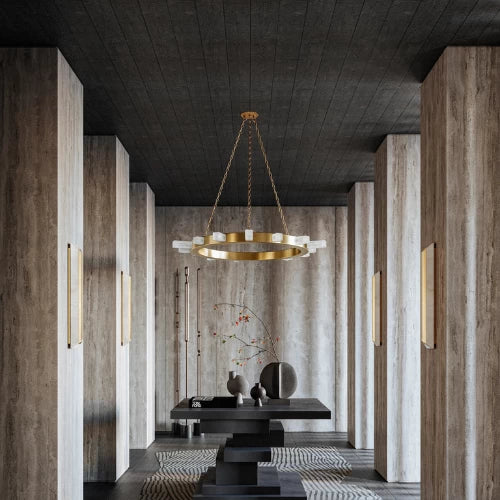Track lighting is an excellent way to illuminate any space. With its versatility and customizable design, it's an ideal choice for those who want to add a touch of modern elegance to their interiors. This comprehensive guide will help you understand all the nuances of track lighting, from its types and benefits to installation and buying considerations.
Understanding Track Lighting
Track lighting is a unique lighting solution where light fixtures, also known as "heads" or "bullets", are connected to a track system. The track contains electrical conductors, supplying power to each track head. This allows the heads to be easily moved and repositioned along the track, offering flexibility in lighting up different areas in a room.
The system is often used for accent, task, or ambient lighting. It's an excellent choice for highlighting artwork, architectural details, or specific work areas.
Advantages of Track Lighting
Track lighting offers numerous benefits, such as:
- Customizable Illumination: Each head can be individually adjusted, allowing you to customize the lighting in your space according to your needs.
- Flexible Installation: Track lighting can be installed on both ceilings and walls, providing flexibility in design.
- Variety of Options: Track heads come in various options, including energy-efficient LED styles and low-voltage halogen bulbs.
- Easy Installation: Most track lighting kits come with everything you need for installation, making the process straightforward and hassle-free.
Types of Track Lighting
When buying track lighting, you'll come across different types of systems. Understanding these types will help you choose the system that best fits your needs.
Complete Track Kits
Complete track kits provide you with everything you need in one package. These kits usually include a track, adjustable light heads, and a canopy. Some designs feature fixed position lights that can be aimed, while others have lights that can move along the bar, offering additional flexibility.
Linear Track
Linear track lighting uses linear strips of track, typically available in various lengths from 2-foot to 8-foot. Connectors are used to join the pieces, so you can create a custom layout for your room. You can choose the style of lights you want and position them anywhere on the track.
Monorail Track Systems
Monorail track systems utilize flexible pieces of track that can be curved to create rounded, flowing shapes. Unlike linear track that lays flat on the ceiling surface, monorail hangs down from the ceiling from standoffs, offering a sleek contemporary look.
Voltage Considerations
Track lighting systems can be either line voltage or low voltage. Line voltage systems connect to your home's standard 110-120 volt feed, while low voltage systems use a transformer to step-down your home's regular current to a lower voltage, typically 12 volts.
Decorative vs. Task Lighting
Track lighting can serve more than one purpose. Many track kits offer a decorative look and produce wide beams of light for general lighting purposes. In contrast, linear and monorail systems feature track heads that offer a more focused beam of light, making them perfect for task lighting in work areas or spotlighting art, plants, or architectural features.
Customizing Your Track Lighting System
One of the key benefits of track lighting is the ability to customize your system. While track light kits come with everything you need, linear and monorail systems can be custom configured. However, keep in mind that not all track, connectors, and lights work together. Always choose compatible parts.
Connecting Linear Track Pieces
With most systems, you can link multiple lengths of track by using straight, T-shaped, or L-shaped connectors. Always ensure to use compatible parts.
Cutting Linear Track
Some track lighting systems allow you to cut the track to fit your space. Always make sure the cut end is either connected to another length or capped with a dead-end cap.
Spacing Lights
In general, you'll want to place track heads on linear and monorail track every 12 to 24-inches. For specific uses, such as lighting a work area, you can place lights closer together but keep them at least 4” apart.
Using Dimmers
Using a wall dimmer adds extra versatility and ambiance to your system. For LEDs, be sure to use an LED compatible dimmer. Line voltage systems with incandescent bulbs work with a standard wall dimmer.
Buying Considerations for Track Lighting
When purchasing track lighting, several factors need to be considered:
- Track System: Ensure the track system is compatible with the track heads you choose.
- Voltage: Check whether the system is line voltage or low voltage and ensure it's compatible with your home's electrical system.
- Lighting Purpose: Consider whether you need the lighting for decorative, task, or general purposes.
- Customization: If you want to customize your system, ensure the components you choose are compatible.
- Installation: Check whether the system can be installed on both ceilings and walls, depending on your space's design.






